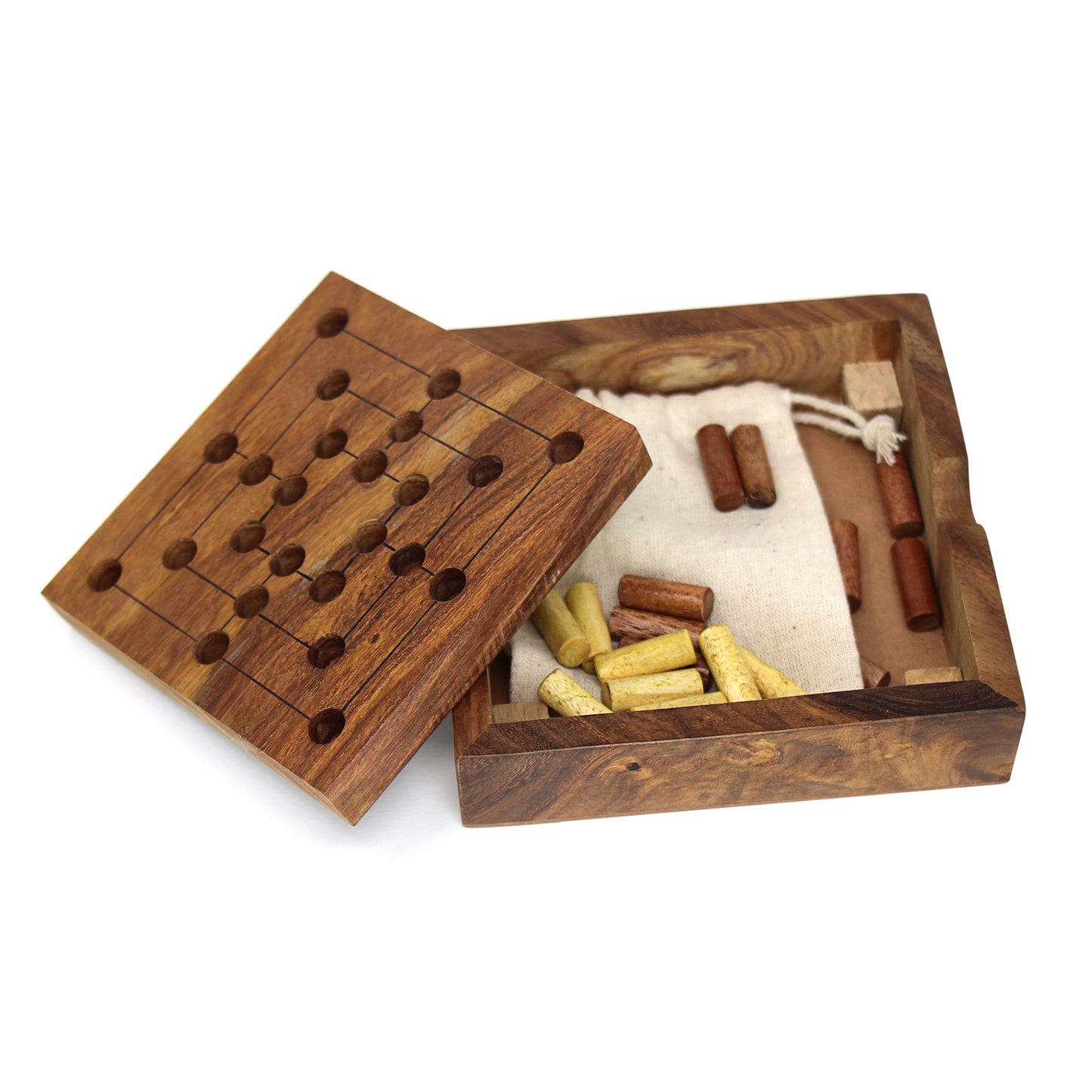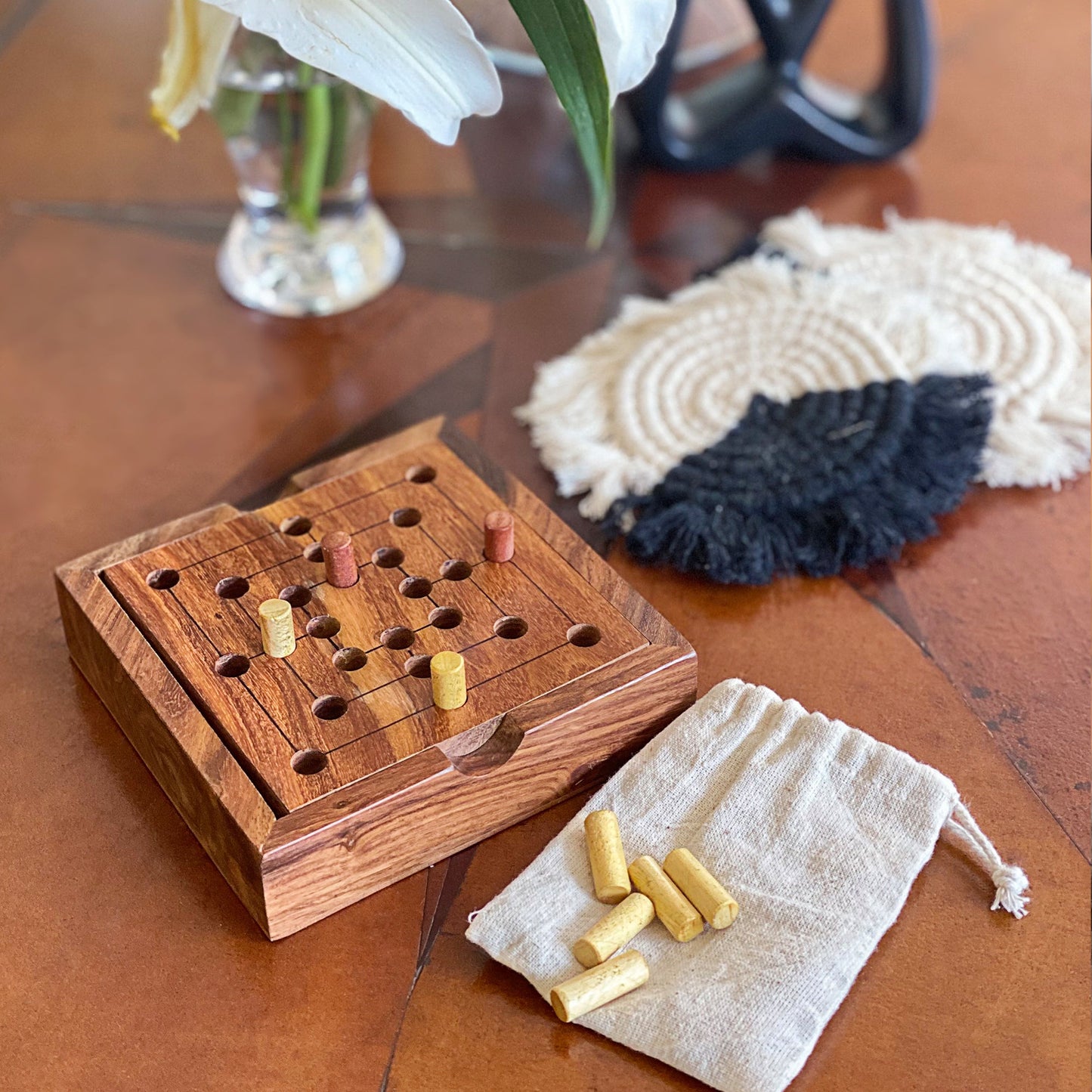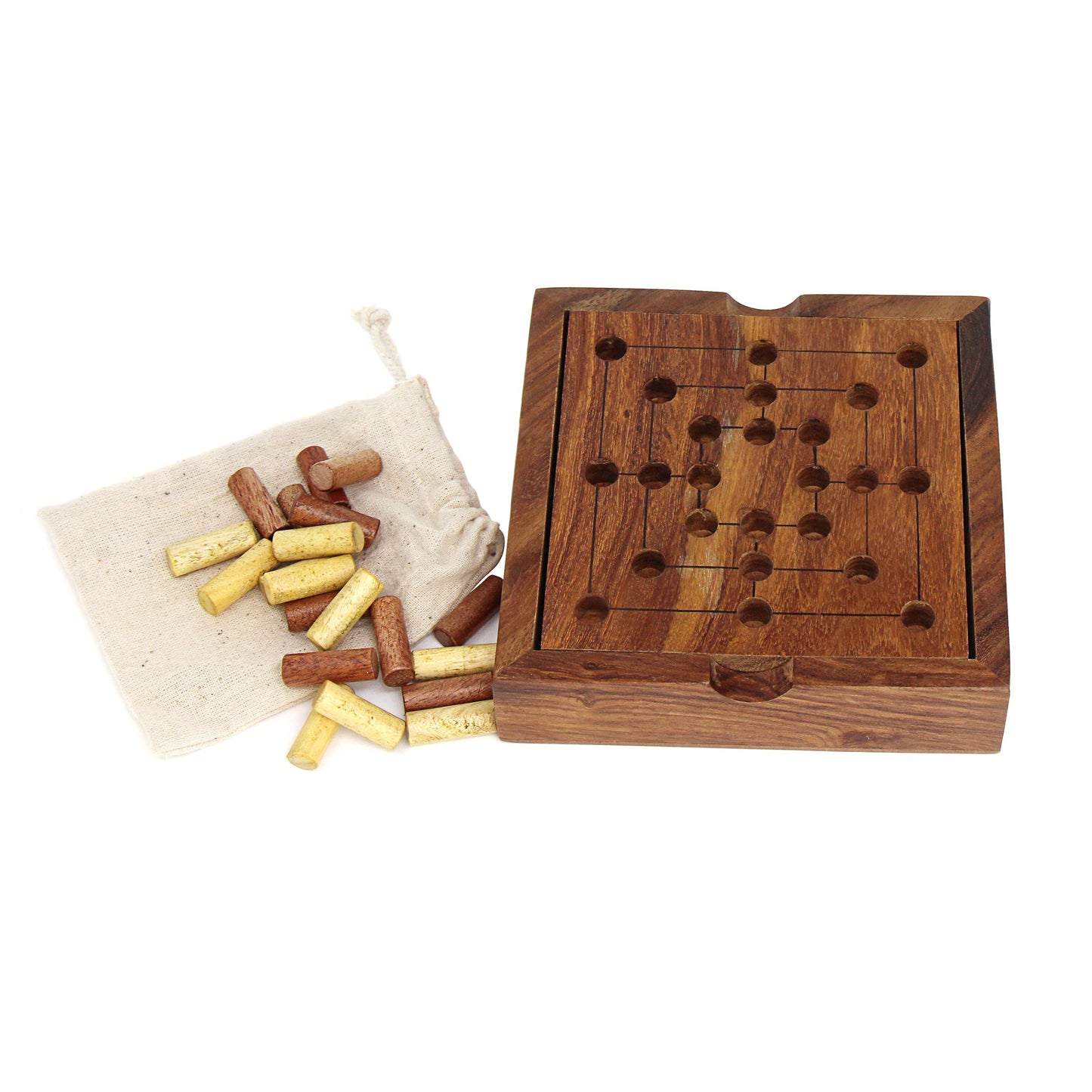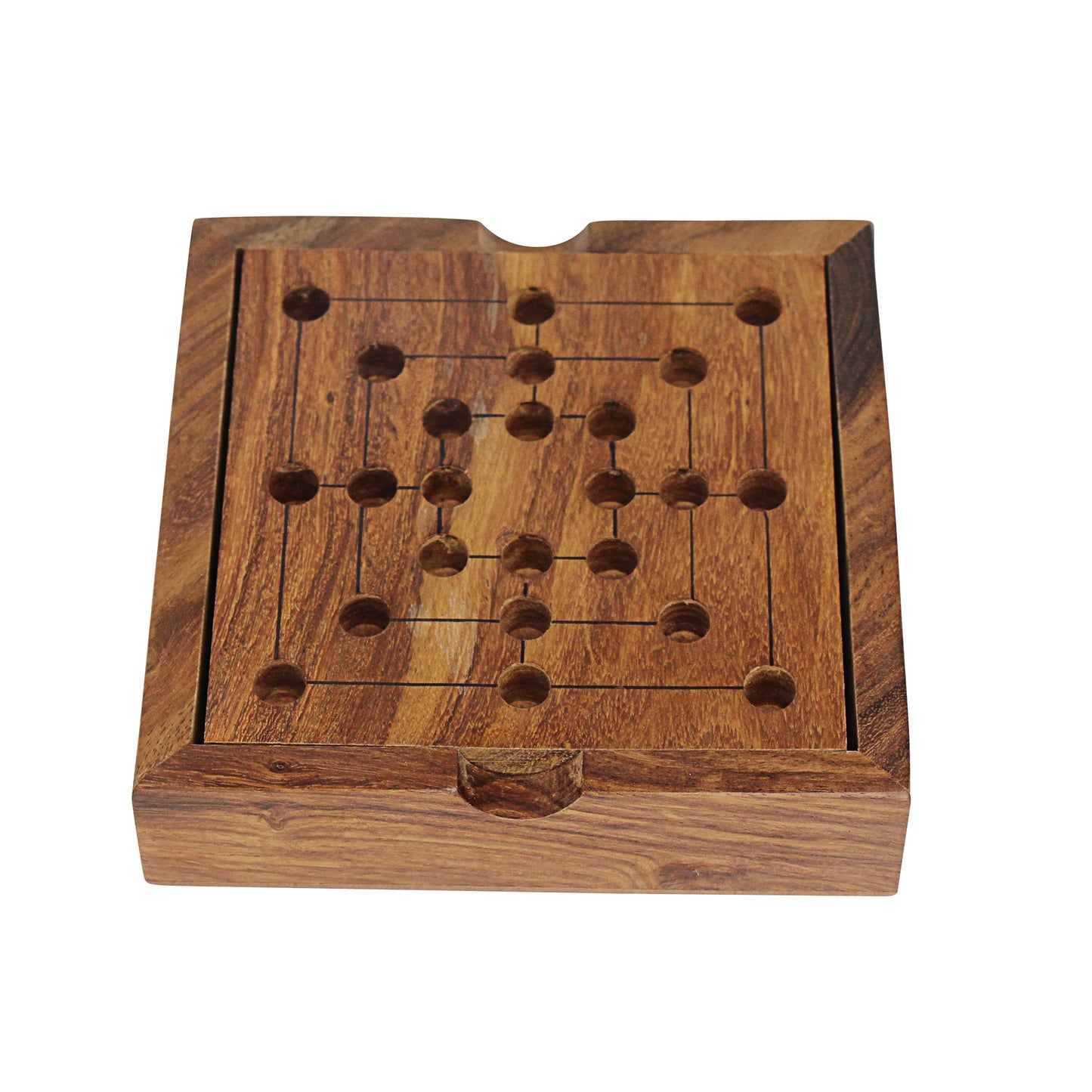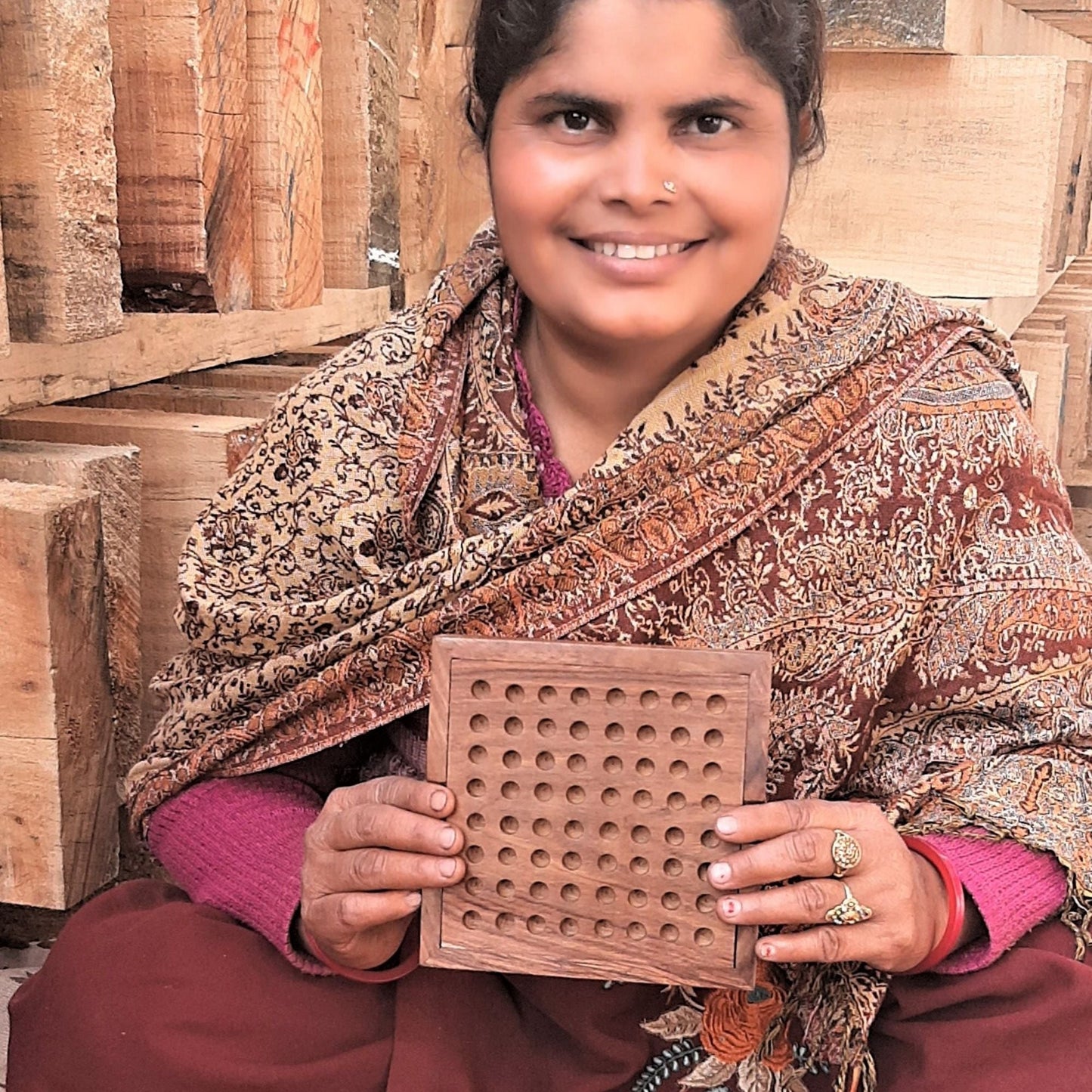Global Crafts
Handmade Nine Men Morris Game - Sheesham Wood-India
Handmade Nine Men Morris Game - Sheesham Wood-India
Couldn't load pickup availability
This decorative Nine Men Norris game box is hand-carved from Sheesham wood. The top lifts to store the bag of pegs. This is a fun game and also a decorative piece that looks great out on a table or shelf. The hand-crafted nature makes this a special game box that is one of a kind. Instructions included.
Product Features:
- Type: Board Games
- Colors: Stained wood
- Materials: Sheesham Wood
- Dimensions: When closed, the box measures 4.5 inches square by 1 inch tall
- Games Pieces included: pegs in a cloth bag
The Story Behind the Art:
The hand-carved games are crafted in Saharanpur in the region of Uttar Pradesh, India which is well-known for its ancient woodcarving techniques. Temples in this region bear witness to the early talent of artisans in that region. Today, the craft is still practiced using hand tools that are much the same.
Brief Game Summary:
Nine Men's Morris is a strategy board game for two players dating at least to the Roman Empire. The board consists of a grid with twenty-four intersections or “points.” Each player starts with nine pieces (one with the lighter color, and the other with the dark color). Players try to form “mills” - three of their pieces on contiguous points in a straight line, vertically or horizontally - allowing a player to remove an opponent's piece from the game. The overall objective is to reduce the number of your opponent's pieces to less than three or to render the opponent unable to play.
Due to the handmade nature, slight variations in size, color, shape, pattern, or other characteristics may be evident. Each piece is truly a unique work of art, lovingly crafted by hand.
Share
About the Artisans
About the Artisans
 Joyeria Semilla meaning Seed Jewelry is a small fair-trade workshop in the Andean town of Villa de Leyva, Colombia. Girasol Taborda, a local artisan and social entrepreneur, started the workshop in the mid-1990s.
Joyeria Semilla meaning Seed Jewelry is a small fair-trade workshop in the Andean town of Villa de Leyva, Colombia. Girasol Taborda, a local artisan and social entrepreneur, started the workshop in the mid-1990s.
Joyeria Semilla’s objective is three-folds; to create new jobs, revive Colombia's handicrafts sector and to motivate locals to better manage their natural resources. The organization works primarily with socially and economically disadvantaged youths, single mothers and people with disabilities in the area. The company offers free training in product design, technical training and marketing to new members. Joyeria Semilla has trained them in the craft of jewelry-making.

Caña Flecha or “Gynerium Sagittatum” is a locally found palm tree in the regions of the Caribbean coast. The leaves from this plant are used for making jewelry, woven hats, bags and baskets. The Zenú Indians were and their descendants inherited the tradition of picking veins of the green palm leaf for weaving. These veins were made into woven hats and other products for their personal use.
The Zenú culture is said to have existed between 200BC to1600AD. With the arrival of the colonizers in the 16th century, the indigenous community declined of unknown reasons. Today a very small population remains that claims the inheritance of the almost extinct Zenú tribe. Known for their skills in the construction of major waterworks, canals and irrigation system along with being skilled goldsmiths, examples of their accomplished craftsmanship are found in various museums around the world. Their larger means of subsistence were hunting, farming, fishing and trading.
Caña Flecha is found in abundance in the region, and hence makes for a sustainable and naturally available raw material for these products. Every bit of the plant is utilized – from using in building walls and roofs in houses to food for cattle and medicinal purposes. It is from the central vein of the leaf that the fibers for weaving are obtained. After the hard surface is peeled off, the fibers are left in the sun to dry and undergo a natural tinting process; these fibers are barely about 1 millimeter in thickness and hence call for a lot of skill and patience to weave with. The dried fibers are then processed for natural coloration - some are boiled with lemon to whiten them and some are treated with mud and boiled with plantain leaves to blacken them. The designs are based on ancient motifs and mathematical representations, which are inspired by the early Zenú culture.
